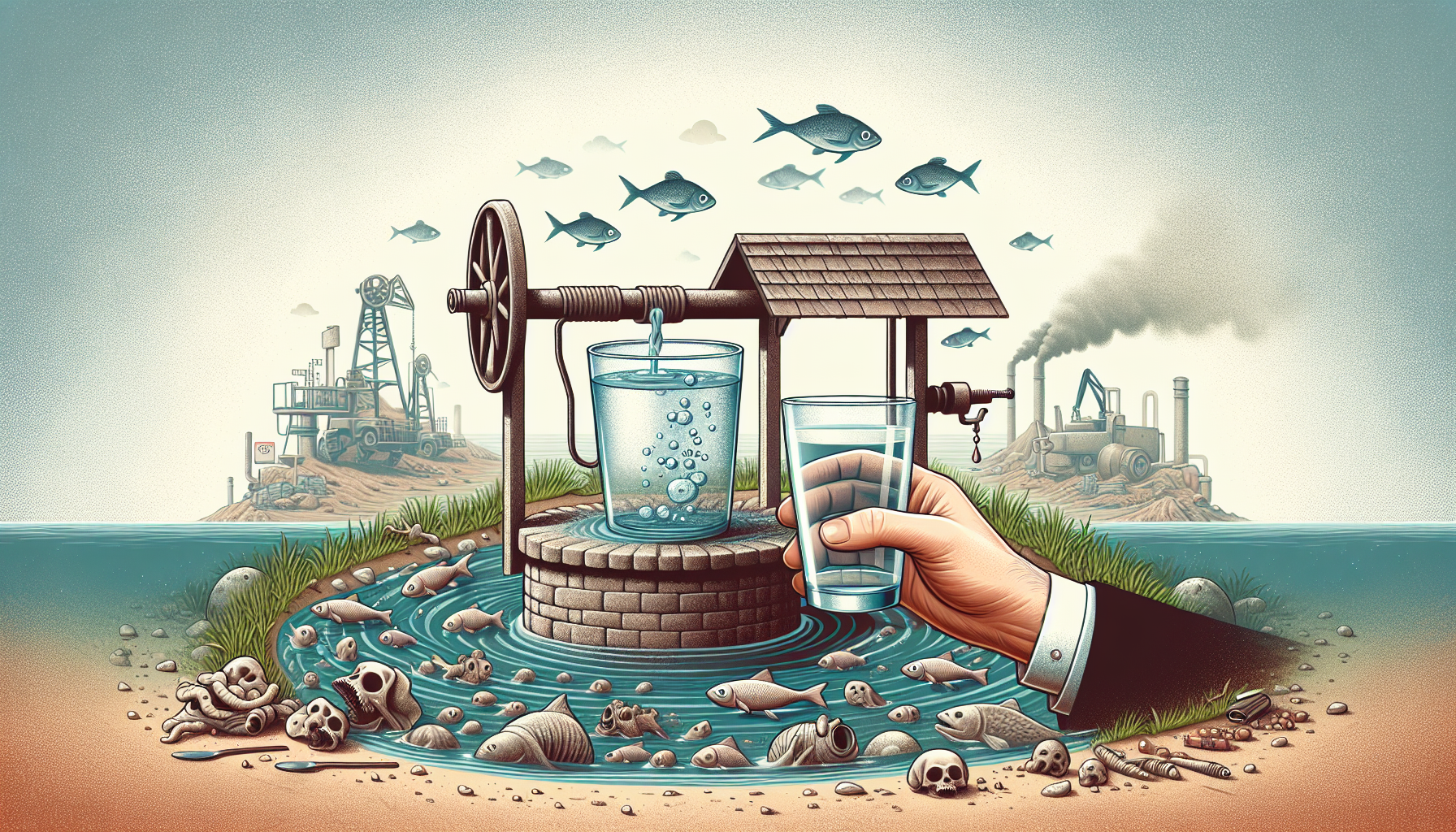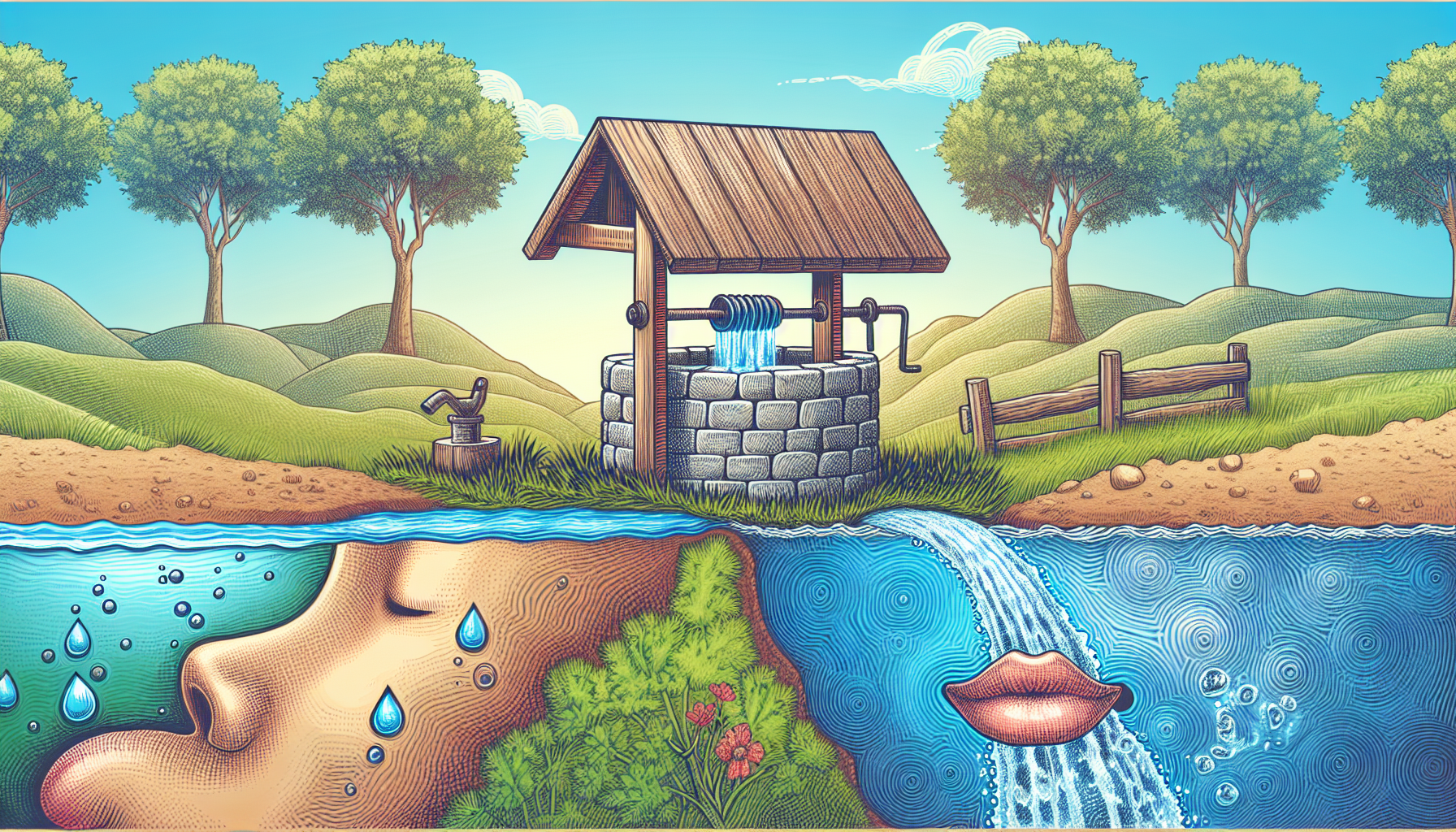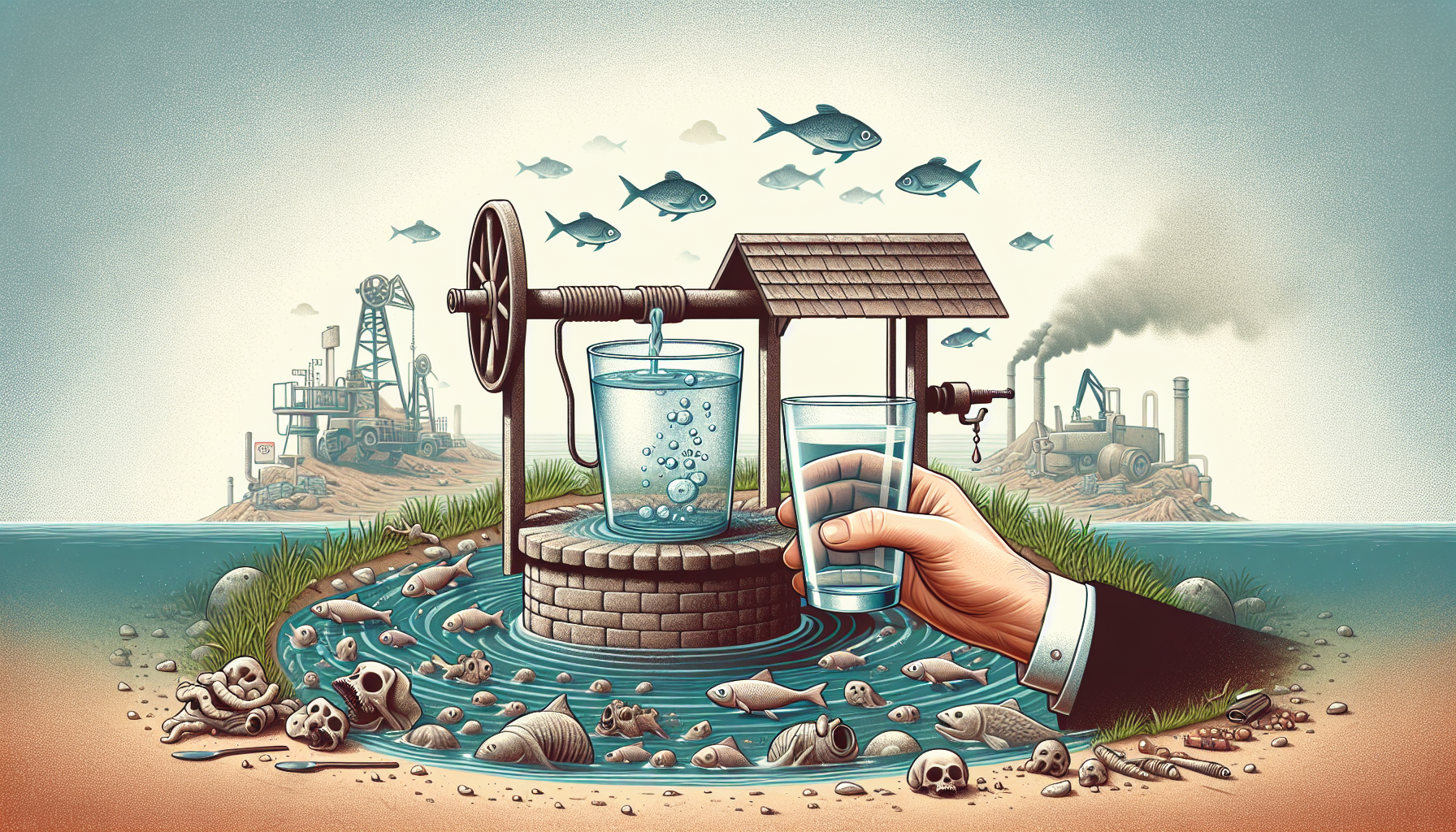Are you a well owner faced with the frustrating problem of unpleasant taste and odor in your well water? Don’t worry, help is at hand! This article explores the plethora of resources available to assist well owners just like you in navigating and resolving taste and odor issues with their well water. From informative websites and online forums to local government agencies and professional experts, you’ll find a range of options to address this common concern. So, if you’re looking for effective solutions to improve the taste and odor of your well water, read on to discover the wealth of resources waiting to support you on your journey towards better water quality.

Understanding the Causes of Well Water Taste and Odor Issues
Introduction to well water taste and odor issues
Well water is a common source of drinking water for many households, but it can sometimes have an unpleasant taste or odor. Understanding the causes of these taste and odor issues is essential for ensuring safe and enjoyable drinking water.
Common causes of well water taste and odor issues
There are several factors that can contribute to the taste and odor issues in well water. These include chemical contaminants, microbiological contaminants, and natural mineral content. Identifying the specific cause is the first step towards finding a solution.
Chemical contaminants
Chemical contaminants can enter the well water through various sources such as agricultural runoff, industrial discharge, or improper disposal of household chemicals. Common chemicals that can impact the taste and odor of well water include pesticides, industrial solvents, and chlorine from disinfection.
Microbiological contaminants
Microbiological contaminants, such as bacteria, viruses, and parasites, can also affect the taste and odor of well water. These contaminants can enter the well water through septic system failures, animal waste, or surface water runoff. Common microbial contaminants that can cause taste and odor issues include E. coli, Giardia, and Cryptosporidium.
Natural mineral content
The natural mineral content of the well water can also contribute to taste and odor issues. Minerals such as iron, manganese, sulfur, and magnesium can give the water a metallic or rotten egg smell. High concentrations of these minerals can result from geologic conditions and groundwater interactions.
Testing and Evaluating Well Water
Importance of water testing
Water testing is crucial for identifying the specific contaminants that are causing taste and odor issues in well water. Regular testing helps to ensure the safety and quality of drinking water, as well as to detect any emerging problems early on.
Types of water tests
There are different types of water tests available to assess the quality of well water. These tests can include testing for pH levels, total dissolved solids (TDS), specific minerals, bacteria, and other contaminants. It is important to choose the right tests based on the identified taste and odor issues.
DIY water testing kits
For those who prefer a do-it-yourself approach, there are water testing kits available that can provide basic information about the quality of well water. These kits typically include test strips or containers for collecting water samples, which are then sent to a laboratory for analysis.
Hiring professional water testing services
For a more comprehensive analysis, it is recommended to hire professional water testing services. These professionals have access to specialized equipment and can provide detailed reports on the quality of well water. They can also offer guidance on appropriate treatment options based on the test results.
Interpreting water test results
Interpreting water test results can be complex, especially if multiple contaminants are present. It is important to consult with a water quality expert or a professional water testing service to properly understand the results and determine the best course of action.
Addressing Taste and Odor Issues at the Source
Identifying specific taste and odor characteristics
Before addressing taste and odor issues, it is crucial to identify the specific characteristics of the problem. Does the water have a metallic taste or a rotten egg smell? Understanding these characteristics can help in determining the appropriate treatment methods.
Removing or treating chemical contaminants
To remove or treat chemical contaminants, various treatment methods can be employed. These can include activated carbon filters, reverse osmosis systems, or chemical oxidation processes. Each method targets specific contaminants and can significantly improve the taste and odor of the well water.
Disinfection methods for microbiological contaminants
Disinfecting well water to eliminate microbiological contaminants can be achieved through methods such as chlorination, ultraviolet (UV) disinfection, or ozonation. These methods are effective in killing bacteria, viruses, and parasites, thereby improving the safety and taste of the water.
Water treatment technologies for specific taste and odor issues
Certain taste and odor issues require specific water treatment technologies. For example, if the well water has a metallic taste due to high iron or manganese content, a water softener or an oxidizing filter can be used. Understanding the specific issue will help in selecting the appropriate treatment technology.
Using activated carbon filters
Activated carbon filters are a popular choice for addressing taste and odor issues in well water. These filters effectively remove a wide range of contaminants, including chemicals, chlorine, and unpleasant odors. They can be installed at the point of entry to the home or at the point of use for drinking water.
Seeking Professional Assistance
Consulting with a water quality expert
If taste and odor issues persist or if the water test results indicate complex problems, it is advisable to consult with a water quality expert. These professionals have in-depth knowledge and experience in dealing with well water issues and can provide tailored solutions based on individual needs.
Finding local water treatment specialists
Local water treatment specialists can be a valuable resource for well owners struggling with taste and odor issues. These specialists have a comprehensive understanding of the local water conditions and can recommend appropriate treatment systems or technologies specific to the area.
Well water associations and organizations
There are numerous well water associations and organizations that offer resources and support for well owners. These associations often have a network of experts and provide educational materials, workshops, and access to helpful information to address taste and odor issues.
Online resources for well owners
The internet is a valuable tool for well owners seeking assistance. Online resources, such as websites, forums, and discussion boards, provide access to a wealth of information and allow well owners to connect with others facing similar challenges. These platforms can provide guidance and solutions to taste and odor issues.

Maintaining and Monitoring Well Water Quality
Regular well maintenance practices
Regular maintenance of the well is essential for ensuring good water quality. Well owners should schedule regular inspections, keep the well clean and free from contaminants, and address any maintenance issues promptly. Regular maintenance practices can help prevent taste and odor issues before they arise.
Monitoring water quality over time
Monitoring the water quality over time is crucial for early detection of any emerging taste and odor issues. Regular testing, as well as keeping track of changes in taste or odor, can help identify potential problems and allow for timely intervention to maintain the overall well water quality.
Signs of potential contamination
Well owners should be vigilant for signs of potential contamination in their well water. These signs can include a persistent chlorine taste, a sudden change in color or odor, or the presence of particles or sediment. Any of these signs should prompt further investigation and potentially the need for treatment.
Addressing emerging taste and odor issues
If taste and odor issues start to emerge, it is essential to take proactive steps to address them. This can involve retesting the water, consulting with water quality experts, and implementing appropriate treatment methods. Addressing taste and odor issues early can prevent their escalation and ensure the ongoing quality of well water.
Well water quality education and workshops
Participating in well water quality education programs and workshops can provide valuable knowledge and resources for well owners. These programs often cover topics such as water testing, treatment methods, well maintenance, and prevention strategies. Well owners can enhance their understanding and skills in managing taste and odor issues through these educational opportunities.
Governmental and Regulatory Resources
EPA guidelines and recommendations
The United States Environmental Protection Agency (EPA) provides guidelines and recommendations for well owners regarding water quality and treatment methods. These guidelines offer valuable insights into maintaining safe and good-tasting well water.
State and local health departments
State and local health departments are another valuable resource for well owners. These departments often have specific guidelines, regulations, and programs related to well water quality. They can offer assistance and provide information on local resources for addressing taste and odor issues.
Well water regulations and permits
It is important for well owners to be aware of any regulations or permits related to their well. Some states or local jurisdictions may have specific requirements that must be followed. Understanding and complying with these regulations can help ensure the safety and quality of well water.
Water quality grants and assistance programs
In some cases, financial assistance may be available to well owners for addressing taste and odor issues. Water quality grants and assistance programs, often offered by government agencies or nonprofit organizations, can provide financial support for testing, treatment, or well maintenance expenses. Exploring these programs can help alleviate the financial burden for well owners.

Community Engagement and Support
Connecting with other well owners
Connecting with other well owners who have experienced taste and odor issues can be helpful for finding solutions. Online platforms, local community groups, or well water associations can facilitate these connections and provide a supportive network for discussing experiences, sharing advice, and learning from one another.
Community forums and discussion boards
Community forums and discussion boards focused on water-related topics can be excellent resources for well owners. These platforms allow individuals to ask questions, seek advice, and engage in discussions with experts and experienced well owners. Participating in these online conversations can expand knowledge and provide practical solutions.
Sharing experiences and solutions
Sharing personal experiences and solutions with other well owners can be mutually beneficial. By sharing experiences, well owners can contribute to a collective pool of knowledge and provide insights into successful strategies for addressing taste and odor issues. This shared knowledge benefits the wider well owner community.
Local support networks and support groups
Some communities may have local support networks or support groups dedicated to well owners. These networks provide a space for well owners to connect, share experiences, and provide mutual support. Participating in these local support networks can offer a sense of community and foster collaboration in addressing taste and odor issues.
Alternative Water Sources
Exploring alternative water supply options
In cases where taste and odor issues persist despite treatment efforts, exploring alternative water supply options may be necessary. This can include considering other sources of water, such as municipal water supply connections or alternative water wells, if feasible and available.
Rainwater harvesting systems
Rainwater harvesting systems can provide an alternative source of water for non-potable uses. These systems collect and store rainwater for activities like landscape irrigation or non-drinking household use. Implementing a rainwater harvesting system can reduce reliance on well water and mitigate taste and odor issues.
Water delivery services
Water delivery services can provide a temporary solution for well owners dealing with severe taste and odor issues. These services deliver clean, treated water to the home, offering a reliable source of drinking water until the taste and odor issues are resolved.
Bottled water as a temporary solution
Another temporary solution for well owners is relying on bottled water for drinking and cooking. Bottled water provides a clean and safe alternative for consuming water while taste and odor issues are being addressed. It is important to choose reputable brands that meet stringent quality standards.

Education and Training Programs
Water quality workshops and seminars
Water quality workshops and seminars offer opportunities for well owners to learn about various aspects of well water management, including taste and odor issues. These events often feature experts who provide valuable insights, practical tips, and information on treatment methods and prevention strategies.
Online courses and certifications
Online courses and certifications are increasingly available for well owners seeking to expand their knowledge of well water quality. These courses cover a range of topics, including water testing, treatment methods, and maintenance practices. Well owners can benefit from the flexibility and convenience of online learning platforms.
Training materials for well owners
Training materials specifically designed for well owners can provide step-by-step guidance on addressing taste and odor issues. These materials often include instructional videos, manuals, and reference guides, empowering well owners to tackle common problems and make informed decisions.
Educational resources for schools and communities
Educational resources aimed at schools and communities can also be valuable for raising awareness about well water quality. These resources often include lesson plans, presentation materials, and activities that educate students and community members about the importance of safe and good-tasting well water.
Financial Assistance and Incentive Programs
Grants and funding opportunities
Grants and funding opportunities exist for well owners seeking financial assistance to address taste and odor issues. These grants are often provided by government agencies, nonprofit organizations, and water management associations. Well owners can explore these options to help offset the costs associated with testing, treatment, or maintenance.
Tax incentives for well-related expenses
In certain cases, well owners may be eligible for tax incentives related to well-related expenses. These incentives can offset the costs of equipment installation, water testing, or treatment systems. Well owners should consult with tax professionals or review relevant tax codes to determine eligibility and potential benefits.
Financial assistance for water treatment systems
Financial assistance may be available specifically for water treatment systems. Some government programs or nonprofit organizations offer low-interest loans or grants to help well owners install or upgrade treatment systems. Exploring these financial assistance options can make treatment solutions more accessible for well owners.
Loan programs for well owners
Loan programs tailored for well owners can provide affordable financing options for addressing taste and odor issues. These loan programs often offer low-interest rates and flexible repayment terms. Well owners can leverage these loan programs to invest in effective treatment systems and improve the quality of their well water.
In conclusion, while dealing with taste and odor issues in well water can be challenging, there are numerous resources and options available to well owners. Understanding the causes, testing and evaluating the water, addressing issues at the source, seeking professional assistance, maintaining and monitoring water quality, utilizing governmental and regulatory resources, engaging with the community, exploring alternative water sources, accessing education and training programs, and exploring financial assistance options can all contribute to improving the taste and odor of well water. By utilizing these resources and taking proactive steps, well owners can ensure their well water is safe, enjoyable, and meets their taste and odor preferences.


